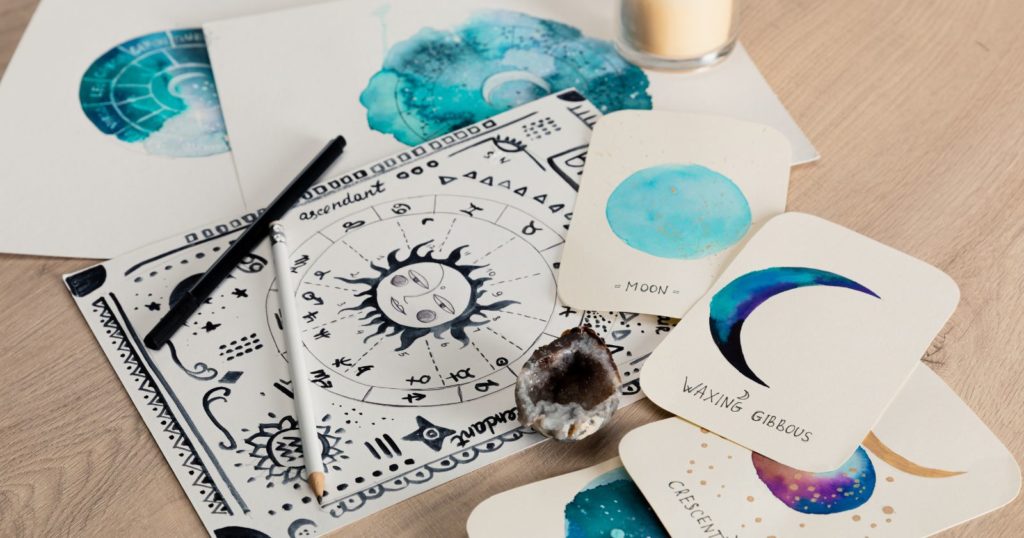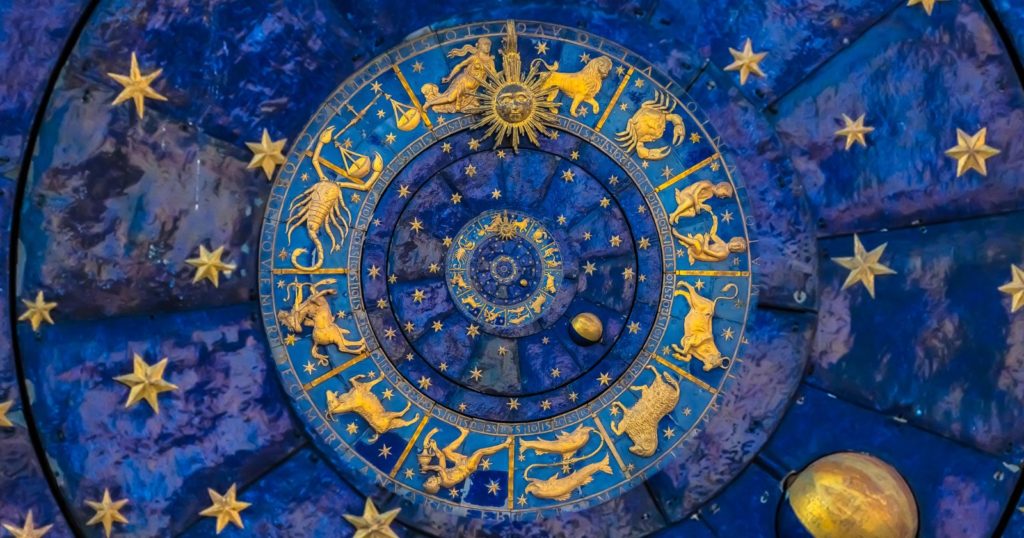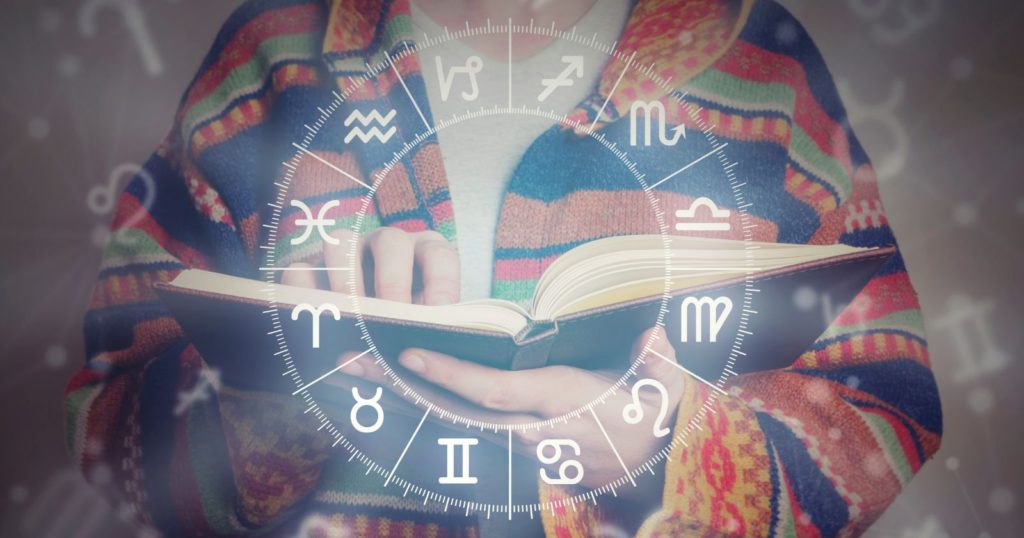Astrology, the mystical art of understanding the celestial language, has captivated humans since the dawn of civilization. And at the very heart of this ancient wisdom is the birth chart—a personalized snapshot of the universe at the precise moment of our first breath. This celestial blueprint carries the cosmic DNA that shapes our destiny, delineates our character, and uncovers our deepest desires and aspirations. In fact, learning to read your birth chart is akin to unlocking a hidden treasure chest of self-understanding and personal growth.
My fascination with astrology began in my teens. However, it wasn’t until a friend introduced me to my personal birth chart that I truly began to understand its transformative power. It was as though someone had switched on a light in a long-dark room, illuminating my personality traits, inherent strengths, and potential areas for growth in a whole new perspective. The chart, a seemingly confusing array of symbols and lines, gradually started to make sense and unravel narratives of my life that were eerily accurate. It served as an extraordinary tool, revealing patterns and potential paths that could guide me through life’s journey.
Now, imagine having that sort of insight into your own life. Wouldn’t you want to know the intrinsic patterns shaping your actions and feelings? Would you not seize the chance to understand your relationships, career inclinations, or personal challenges in more depth? Yes, it may seem overwhelming initially. But fear not, for this article is your comprehensive guide.
Over the next sections, we will demystify the complex symbols, signs, houses, and planetary aspects of your birth chart. You’ll learn to interpret the cosmic language, allowing you to glean vital information about your authentic self. By the end of this journey, you’ll have taken a significant step towards deeper self-understanding and personal growth. So, get ready to delve into your cosmic DNA and discover the incredible secrets your birth chart holds for you.
What is a Birth Chart?
A birth chart, also known as a natal chart, is essentially a cosmic map of the sky at the exact moment of your birth. Picture this as a snapshot taken by the universe that freezes all celestial bodies in their positions, creating a unique celestial pattern that will never be repeated in exactly the same way. It’s as unique to you as your fingerprints or DNA—hence the phrase “cosmic DNA.”
Constructed using your birth date, time, and location, this chart serves as the cornerstone of astrology. It consists of a 360-degree wheel divided into twelve sections, each representing an astrological house. Inside this wheel, the placements of the Sun, Moon, and planets in different zodiac signs at your time of birth are plotted. This intricate system of symbols, lines, and circles may seem cryptic at first glance, but once decoded, it reveals a wealth of information about your innate characteristics, potential, and life’s path.
So, what exactly does a birth chart reveal? At its core, it uncovers three fundamental aspects of our existence: our identity (Sun sign), emotions (Moon sign), and how we appear to the world (Ascendant or Rising sign). However, it delves much deeper, providing insights into our intellectual tendencies, communication style, love and romantic inclinations, drive and ambition, luck and fortune, challenges and transformations, and much more. Essentially, a birth chart holds the keys to understanding our life’s purpose, challenges, and opportunities for growth.
Let’s explore the primary components of a birth chart:
- Planets: In astrology, the term ‘planet’ is used loosely and includes the Sun, Moon (known as ‘luminaries’), Mercury, Venus, Mars, Jupiter, Saturn, Uranus, Neptune, and Pluto. Each planet represents a different facet of life, a part of our psyche, or a type of energy. For instance, Mars symbolizes aggression and drive, while Venus governs love and beauty.
- Zodiac Signs: These are the twelve constellations through which the planets move: Aries, Taurus, Gemini, Cancer, Leo, Virgo, Libra, Scorpio, Sagittarius, Capricorn, Aquarius, and Pisces. The zodiac sign that a planet is in affects how that planet’s energy is expressed. So, if Mars is in the sign of Taurus in your birth chart, your drive and aggression might be expressed in a steady, determined, and persistent way—qualities associated with Taurus.
- Houses: The birth chart’s wheel is divided into twelve houses, with each one representing a different area of life. For example, the first house represents self-image and personality, while the tenth house relates to career and reputation. The location of a planet in a specific house influences which area of life its energy plays out in.
- Aspects: These are the angles the planets make with each other on the birth chart, representing the relationship between different parts of your psyche. They can indicate harmony or conflict, ease or challenge, depending on the planets involved and the nature of the aspect.
It’s important to note that the birth chart is not a fixed destiny. Instead, it is a tool that offers insights into our potentials and challenges. It’s like having a personalized guidebook for life, providing clues and signposts to navigate our journey. Understanding your birth chart allows you to make more informed decisions, improve your relationships, and cultivate personal and spiritual growth. Armed with this knowledge, you can live your life more authentically and fully, leveraging your strengths and overcoming your challenges.
Decoding Your Birth Chart
As we embark on this voyage of astrological exploration, I’ll guide you through seven key steps to decode your birth chart. We’ll start with the three foundational elements of your astrological profile—the Sun, Moon, and Rising signs—before diving into the deeper, complex layers of planetary placements, houses, zodiac signs, and aspects.
Step 1: Understanding Your Sun Sign
Your Sun sign represents your core identity and signifies the essence of who you are. It’s the fuel that drives your life journey, the primary force shaping your character, ego, and self-image. The Sun rules over the sign of Leo, so think of it as the “king” or “queen” of your personal cosmic court. It illustrates your primary direction in life and your conscious mind. To interpret it, find which zodiac sign the Sun was in when you were born.
Step 2: Interpreting Your Moon Sign
Your Moon sign reflects your inner self, your emotions, instincts, subconscious, and the way you instinctively react to life’s events. In other words, it represents your emotional personality. The Moon sign shows how you nurture and wish to be nurtured. It’s about your needs and how you meet them. To find it, see which zodiac sign the Moon was in at your time of birth.
Step 3: Deciphering Your Ascendant (Rising Sign)
Your Ascendant or Rising sign represents your outward self—how you appear to the world, your first impressions, and physical appearance. It’s the lens through which you see the world and how the world sees you. Determined by the zodiac sign that was rising on the eastern horizon at your birth time, your Ascendant sign can often influence your life path and experiences.
Step 4: Grasping the Importance of the Planetary Placements
Each planet in your birth chart signifies a different part of your personality and life, influenced by the zodiac sign it resides in. For example, Venus governs love, beauty, and value—its placement reveals how you approach relationships and what you’re attracted to, both in love and life. Mars, on the other hand, rules over action, passion, and drive. Its placement can indicate how you assert yourself and pursue your desires. It’s crucial to examine each planet’s position to gain a more comprehensive view of your persona and life path.
Step 5: Comprehending Your Astrological Houses
Your astrological houses give context to your planetary placements, showing where (which area of life) those planetary energies will manifest. For instance, if your Venus resides in the 10th house (associated with career and public reputation), you may be drawn to aesthetically pleasing professions or may seek harmonious relationships in your workspace. The position of planets in the houses can give rich insights into various life aspects like career, relationships, wealth, communication, family, etc.
Step 6: Reading Your Zodiac Signs
Your zodiac signs play a significant role in shaping your personality traits and life experiences. Each of the 12 zodiac signs has its unique characteristics and is ruled by a specific planet, influencing how that planet’s energy is expressed. For example, if you’re a Gemini, you might be more communicative, adaptable, and intellectual. However, the sign your Mercury (planet of communication) resides in can modify how you communicate.
Step 7: Understanding the Aspects
Aspects are the angles made between planets in your birth chart, showing the relationships between different parts of your personality. They can be harmonious (like trines and sextiles) or challenging (like squares and opposition s), indicating where you might encounter ease or tension in life. For instance, if your Sun and Moon form a harmonious trine, it suggests a smooth integration between your conscious and subconscious selves, contributing to a balanced personality. On the other hand, a square aspect between Mars and Saturn may indicate conflicts between your drive and discipline, leading to possible frustration or delayed achievements. Understanding aspects can reveal dynamic interplays within your psyche, illuminating areas of potential growth or conflict.
Misconceptions and Common Mistakes in Birth Chart Interpretation
While understanding your birth chart can provide illuminating insights, it’s also essential to be aware of some common misconceptions and mistakes that often arise during birth chart interpretation. Let’s debunk a few of these myths and errors to ensure you get the most out of your astrological journey.
Misconception 1: Your Sun Sign Dictates Everything
One of the most common misconceptions in astrology is that your Sun sign encompasses your entire personality. However, while your Sun sign does represent a significant part of your identity, it’s merely one piece of the puzzle. Your Moon sign, Rising sign, and the placements of other planets in your chart also play crucial roles in shaping your character and life experiences. In other words, your birth chart is a symphony of celestial influences, not a solo performance.
Misconception 2: Birth Charts Predict The Future
A birth chart isn’t a crystal ball predicting specific events or outcomes. Rather, it’s a tool providing insight into your potentials, strengths, weaknesses, and areas for growth. It presents the possibilities inherent in your life, not a fixed, predetermined fate. Your free will and the choices you make play a significant role in how these potentials manifest in your life.
Misconception 3: Negative Aspects are Fatalistic
When interpreting your birth chart, it’s easy to feel disheartened upon discovering challenging aspects or placements. However, these “difficult” configurations are not curses, but rather opportunities for growth and transformation. They highlight the areas where you might face obstacles, yet overcoming these challenges often leads to personal evolution and wisdom. Remember, diamonds form under pressure.
Common Mistake 1: Neglecting the Houses
In birth chart interpretation, people often focus heavily on the planets and signs, neglecting the astrological houses. However, the houses provide the context of where the energies of your planets and signs play out in your life. Without considering the houses, your interpretation may lack depth and relevancy to specific life areas.
Common Mistake 2: Overcomplicating the Aspects
While aspects provide valuable insights into the relationships between planets, obsessing over every minor angle can lead to an overly complex and confusing interpretation. It’s best to start with the major aspects (conjunctions, oppositions, squares, trines, and sextiles) before moving on to the more subtle ones. Remember, simplicity often leads to clarity.
Common Mistake 3: Forgetting the Chart as a Whole
Every part of your birth chart—from your Sun sign to the tiniest asteroid—contributes to a cohesive whole. Each element interacts with the others in a dynamic, fluid way. Therefore, try to avoid dissecting your chart into isolated parts. Instead, strive to see the chart as a harmonious whole, understanding how each piece connects and contributes to the broader narrative of your life.
In essence, interpreting your birth chart is both an art and a science. While it’s essential to understand the core components, remember to approach your chart with an open mind, understanding that it’s a tool for self-discovery and growth rather than a rigid, deterministic roadmap of your life.
How Birth Chart Interpretation can Guide Your Life Decisions
As we navigate the ever-changing tides of life, we often grapple with decisions that shape our future. Whether it’s choosing a career path, understanding our relationships, or simply seeking personal growth, having a reliable guide can be invaluable. This is where the beauty of birth chart interpretation comes into play. By providing unique insights into our character, desires, strengths, and challenges, a birth chart can guide our life decisions in profound ways.
- Career Guidance: Your birth chart, particularly the position of your Midheaven sign and 10th house, can offer insight into your career inclinations. For instance, a Midheaven in Gemini might indicate a talent for communication, making careers in writing, journalism, or marketing appealing. Planetary placements in your 10th house can further refine these insights. Remember, though, this doesn’t confine you to specific professions; it simply highlights where your strengths might lie.
- Relationship Understanding: Love and relationships can be complex, but astrology offers tools to navigate these intricate waters. Your Venus sign and its aspects can reveal how you approach love and what you value in a partner. Moreover, comparing your birth chart with your partner’s—a practice called synastry—can highlight areas of harmony or potential conflict in your relationship.
- Personal Growth: Your birth chart is like a personal growth roadmap. By highlighting your strengths, it can boost your confidence and encourage you to capitalize on these areas. Simultaneously, it pinpoints your challenges, providing opportunities for improvement and transformation. For instance, if you have a challenging Mars-Saturn aspect, you may struggle with frustration or delayed gratification. Recognizing this can prompt you to develop patience and perseverance.
- Life Purpose and Spiritual Growth: Your North Node, a point in your birth chart, can provide clues about your life purpose and spiritual growth direction. It represents qualities to develop in this lifetime, pushing you out of your comfort zone towards evolution and fulfillment. For example, a North Node in Virgo might suggest a path of service, attention to detail, and self-improvement.
- Self-Understanding: Above all, a birth chart provides profound self-understanding. By revealing your core identity, emotional nature, desires, strengths, and challenges, it helps you comprehend your authentic self more deeply. This self-awareness can guide decisions in all life areas, fostering authenticity and self-acceptance.
In a professional setting, I once guided a client struggling with career choices through her birth chart interpretation. Her Midheaven was in Cancer, and her 10th house was ruled by the Moon, suggesting a career involving nurturing, care, or emotional connection. She had been considering a shift from her corporate job to counseling—a decision her birth chart supported. With this reassurance, she confidently made the transition and found immense fulfillment in her new career.
A birth chart doesn’t dictate your decisions—it illuminates potentials. It provides a celestial counsel, offering insights that you can choose to incorporate in your decision-making process. As you weave this cosmic wisdom into your life, you can make choices that resonate deeply with your authentic self, propelling you towards a life of fulfillment and personal growth.
Conclusion
To conclude, decoding your birth chart is not merely a fascinating exploration of your celestial DNA but also a potent tool for self-discovery and personal growth. Your birth chart is akin to a cosmic mirror reflecting your inner universe, the various aspects of your personality, your strengths, weaknesses, and potential areas for growth.
As you delve into this astrological voyage, remember that the information in your birth chart doesn’t seal your fate; rather, it provides insight into your potentials and challenges. Just as we use a map to navigate unfamiliar terrain, you can use your birth chart as a guide on your life’s journey. It’s not about predicting events or rigidly defining your personality traits; instead, it’s about understanding yourself more profoundly and making the most of your potentials while being aware of possible challenges.
This complex dance of planets, signs, houses, and aspects that form your unique birth chart is an extraordinary tool that helps you understand the essence of who you are, how you interact with the world, and what you’re here to learn. The art and science of astrology and birth chart interpretation, while intricate, can provide you with valuable insights that contribute to your personal and spiritual growth.
By engaging in this exploratory process, you empower yourself with the knowledge to consciously and intentionally navigate your life’s course. So, I invite you to keep exploring, questioning, and learning more about this fascinating cosmic language and the profound insights it holds for you. Every celestial body has a story to tell, and learning to decode this celestial narrative is an enlightening journey of self-discovery, personal development, and spiritual evolution.
Book Resources:
- “The Only Astrology Book You’ll Ever Need” by Joanna Martine Woolfolk.
- “Astrology for the Soul” by Jan Spiller.
- “The Twelve Houses” by Howard Sasportas.




